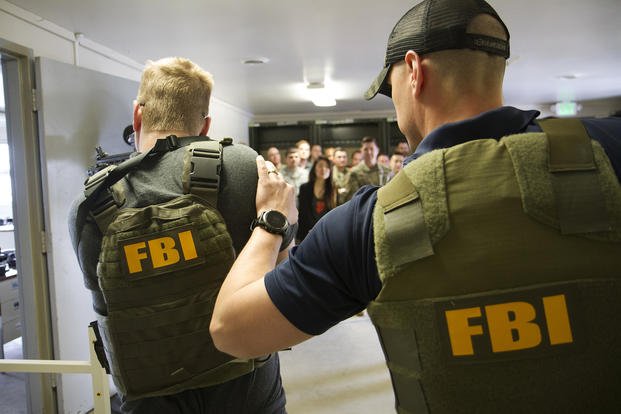When it's time either to retire or resign from the military, many troops decide to keep serving the country and community in a different way.
This is a question from an Army infantry officer who is preparing to move to the FBI in the next year. From a fitness perspective, the good news is that the tests are similar enough that anyone can prepare for both the Army and FBI at the same time. However, with some of the potential changes to Army fitness testing, there might be more to prepare for. Here is the question:
Mr. Smith, I am a current Army officer, looking at making a transition to the FBI in the next year. I have a few questions about the current Army physical fitness test (APFT) and the future Army combat fitness test (ACFT), and my FBI physical fitness test preparation. We may take the new ACFT before I am in the Reserves or not -- not sure yet. I also need to prep for the FBI test. Likely I will stay in the Army Reserves as well. Any suggestions on the next year of training? Thanks, Captain A.
Thanks for your service and your continued commitment to serve your country in a different capacity. Any transition from the military to a new career will have its bumps in the road, but this one is typically pretty smooth physically, academically and administratively. Since you are giving yourself over a year to make this transition, you actually have plenty of time to prepare for the following test.
FBI Fitness Test
Sit-ups, one minute. That's half of the current Army test, so easy day. But you can start off a little faster than a normal two-minute sit-up pace. If you can push one per second, that is a great above-average score.
300-meter sprint. This requires practice. It can deplete energy levels seriously and cause the 1.5-mile run later in the test to be significantly challenged and slower.
Push-ups, max reps. This is a big difference. You typically can last about one minute, but the reason why there is no time limit is that you cannot stop and rest in the up position. This is max reps in continuous motion. Any pause, and the test is over.
1.5-mile run. That's half a mile less than the future ACFT.
Pull-ups. They are not graded, but they're always good to be able to do for many reasons in training (getting over walls, rope obstacles, fences, etc.).
As you can see, it is not that much different than the current Army PFT of:
Push-ups, two minutes
Sit-ups, two minutes
2-mile timed run
However, the new ACFT coming out this year or early next year will look like this:
Trap bar deadlift, one to two times body weight (one to five reps)
Hand-release push-ups. Push up -- but in down position, lift hands off ground -- max two minutes.
Leg tuck. Hanging knee-ups from pull-up bar, bring knees to elbow (alternating grip)
Standing power throw. Throw medicine ball over head (backward) as far as you can.
250-meter sprint/drag/carry. All events are 25 meters out and back for time: (1) sprint, (2) 100-pound sled drag, (3) sprint, (4) two 40-pound kettlebell carry and (5) sprint.
Two-mile timed run.
You may find that getting good at all of these exercises is very possible, but depending on your time to train each day and current physical abilities, it might take some time. Given your year timeline, that is good.
My first response to your question is finish off the summer and fall crushing the PT tests of old and adding in the sprints for the new FBI test.
Mixing in leg tucks during pull-up workouts is a way to mix both tests, as well as some hand-release push-ups into your nonstop push-up sets.
Then, in the late fall and winter, use the calisthenics to warm up before lifting workouts and focus more on the ACFT. It is fine to blend in some 300-meter sprints into this cycle, too, as well as doing nonstop push-ups and one-minute sit-ups.
Using a personalized periodization model is a good idea. I typically do the heavier lifts and faster runs (sprints) in the fall and winter months. The longer runs and higher-repetition calisthenics are the spring and summer months' focus, but you still can use calisthenics as your warmup to maintain muscle stamina during the winter months easily.
Related:
Giving the year and multiple elements of fitness in which you need to be competitive, you should be well-prepared for any test and be a more well-rounded tactical athlete.
Any time you know you have a few weeks to a month before any of the three tests, your workouts can change to focus more on that test. Practice taking the test a few times, create some strategies and then rest to crush the test.
Stew Smith is a former Navy SEAL and fitness author certified as a Strength and Conditioning Specialist (CSCS) with the National Strength and Conditioning Association. Visit his Fitness eBook store if you’re looking to start a workout program to create a healthy lifestyle. Send your fitness questions to stew@stewsmith.com.
Want to Learn More About Military Life?
Whether you're thinking of joining the military, looking for fitness and basic training tips, or keeping up with military life and benefits, Military.com has you covered. Subscribe to Military.com to have military news, updates and resources delivered directly to your inbox.
















